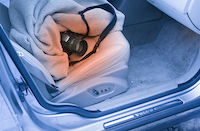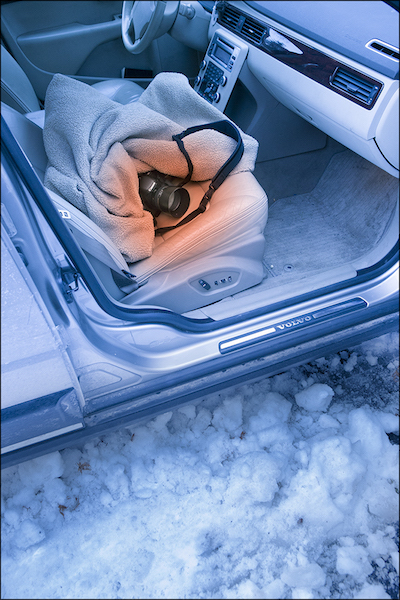The importance of keeping your camera warm and dry
posted Tuesday, January 20, 2015 at 12:08 PM EST

Despite some clearly risky behavior, Kurt Cobain drove a Volvo station wagon. He was interested in the safety afforded a Volvo. According to one of his bandmates, he “drove like a little lady”. In the early days, they didn’t let him drive the van.
Meryl Streep said that between movie shoots she always got a bad case of “Volvo butt” driving her kids to soccer matches.
So at least I’m among interesting company. It does seem unlikely, however, that Kurt Cobain or Meryl Streep ever warmed their camera with the car seat warmer built-in to the car. It works like a dream and I’ve been doing it for years.
I know that to some of you having a car with seat warmers sounds like one of those embarrassing things that slip out during a presidential campaign. Fortunately, I have no political aspirations and in my defense, I barely knew the car had seat warmers when I bought it five years ago.
But now that I’m the lucky owner of car seat warmers, I’ve got to tell you they are sweet! When it’s cold outside and the warmers are cranked up they can become downright hot and that’s why they do such a beautiful job of keeping an expensive camera warm and dry when you’re out shooting pictures in the wintertime.
I keep a nice wool blanket over the camera as I’m driving around shooting pictures. The camera can get warm enough to actually warm your hands when you get in the car. I know I’m sounding a little like Marie Antoinette here with the car warmers, but it does help me make a bigger point.

Digital cameras aren’t crazy about cold weather. I’m certainly not saying don’t take your camera out into the cold, but moisture and low temperatures are not all that great for serious electronics. The absolute worst scenario is to let your camera become really cold in a car and then take it into an indoor swimming pool or greenhouse to shoot photographs. The camera is quickly covered with water. Not good. You can have a fifteen minute wait before a camera will be dry enough to photograph a swim meet. (Don’t rub the fog lens with a paper towel! Just let it warm up on its own.) The solution is to keep the camera in a Ziploc baggie when you take it into a warm high humidity area and let the camera adapted to the temperature while it’s still in the bag. (A large Ziploc baggie is a very smart thing to keep in a camera bag.) If you don’t have a plastic bag, it’s a good idea to keep your gear in your camera bag while it comes to temperature. But you don’t always have that luxury.
Once again, I really want to stress that I’m not suggesting you don’t take your camera out into whatever winter wonderland you live near. Do it. And keep your camera warm and dry when you can.
(An exceptional educator and a world-class photographer, Nick Kelsh is the founder of How To Photograph Your Life, an excellent source of affordable photography training and tips. Nick’s courses can be conducted by yourself in your own time, or with feedback from Nick and your fellow students. If you appreciated this article and want to improve your photography, visit How to Photograph your Life and sign up for a course today!)